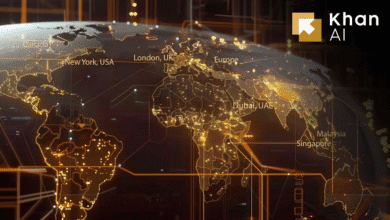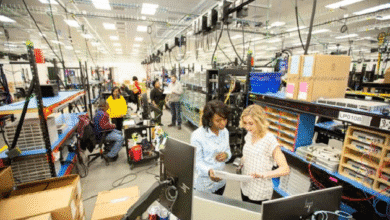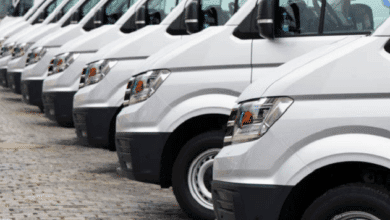Why People Are Returning to Analog Technologies Like Printed Maps and Film Cameras

Last Saturday, while waiting for my friend Max to arrive for our hiking trip, I found myself doing something I hadn’t done in years – unfolding a massive paper map across the hood of my car. Two weeks earlier, on a similar excursion, my phone battery had died halfway through our trek, taking our GPS navigation with it. We got hopelessly lost and ended up walking an extra four miles. “Never again,” I vowed, as I traced our planned route with my finger. Sitting in the passenger seat, my girlfriend was only half paying attention, absorbed in some online casino real money app she’d recently discovered. “You know this is why I keep telling you to upgrade your phone,” she said without looking up. But that’s just it – my decision to buy a physical map wasn’t about having outdated technology. In fact, most of my friends who are embracing analog tools are the same people who have the latest smartphones, tablets, and smartwatches. So what’s driving this seemingly contradictory return to older technologies?
The Digital Burnout Factor
I first noticed my own digital fatigue about two years ago. My phone would buzz with a notification, and I’d feel a wave of dread rather than the dopamine hit it once provided. Conversations with friends revealed I wasn’t alone. Mia, a graphic designer who spends most workdays staring at screens, told me she started using film cameras specifically because they couldn’t interrupt her with alerts. “When I’m shooting film, I’m just taking photos, not checking emails or texts or getting pulled into something else,” she explained while showing me her collection of vintage cameras.
The constant connectivity that once seemed miraculous now feels oppressive to many. Paper maps don’t ping you with alternate routes based on traffic. Physical books don’t suggest similar titles while you’re still reading. Vinyl records don’t algorithmically queue up the next song they think you might like. There’s a purity to the experience that many find increasingly precious.
The Unexpected Joy of Imperfection
Digital tools aim for perfection – precise navigation, flawless photos, crystal-clear audio. But there’s something compelling about the imperfections of analog technology. My friend Jake recently showed me photos from his honeymoon shot on film, and they weren’t technically “better” than digital photos – they had grain, slight light leaks, and imperfect framing since he couldn’t immediately see the results. Yet they captured something his thousands of iPhone photos missed.
“These feel more like how I remember the trip,” he said, pointing to a slightly overexposed shot of his wife laughing on a beach. “Not perfect, but real.”
The Tangibility Appeal
In my apartment, my small bookshelf has become something of a conversation piece, not because the collection is particularly impressive, but because physical books have become somewhat unusual among my peer group. Visitors often browse the titles, pull books off the shelf, and comment on covers or dog-eared pages in a way they never would with my Kindle library.
Sarah, who works in tech and spends her days designing digital experiences, has amassed an impressive collection of vinyl records. “I could fit thousands more songs on a hard drive that would take up less space than a single record,” she acknowledged. “But I can’t hold a playlist in my hands. I can’t see the artwork at album size. I can’t experience the ritual of putting the record on and dropping the needle.”
The physicality creates a different relationship with the content. Maps get folded and refolded, developing creases that tell the story of past adventures. Books get coffee stains and notes in margins. Printed photos go into albums or get tacked to walls. They exist in our physical spaces in ways digital content cannot.
The Satisfaction of Deliberate Limitations
Digital tools offer near-infinite options – unlimited photos, countless route recalculations, endless playlists. Paradoxically, many people find freedom in the limitations of analog technologies. With a 36-exposure film roll, every shot matters. When replanning a route with a paper map, you must commit to the new direction.
My cousin Tom, who switched from digital music production back to hardware synthesizers and tape recording, put it this way: “When everything is possible, it’s paralyzing. When I have specific limitations, I get creative within those boundaries.”
Is This Just Nostalgia?
Some dismiss the analog revival as simple nostalgia, particularly since many embracing these technologies aren’t old enough to have used them the first time around. My 22-year-old intern recently bought a typewriter despite never having used one before 2024.
But this misunderstands what’s happening. People aren’t returning to analog technologies because they think they’re superior in all ways or because they’re rejecting modern innovations. They’re selectively incorporating analog elements that provide specific benefits digital alternatives lack.
It’s not about going backwards – it’s about thoughtfully choosing tools that create the experiences we actually want rather than defaulting to digital for everything. My hiking map doesn’t replace Google Maps for daily navigation, but it serves a different purpose, creating a different experience.
As our lives become increasingly digital by default, the conscious choice to use analog tools in specific contexts feels less like nostalgia and more like reclaiming agency over how we experience the world. There’s something powerful about saying, “This experience is important enough to me that I want it unfiltered by algorithms, uninterrupted by notifications, and experienced through physical objects I can touch and keep.”
Maybe that’s why, despite my girlfriend’s gentle mockery, I’ll be bringing paper maps on our hikes for the foreseeable future. Some experiences are worth the extra weight in my backpack.





